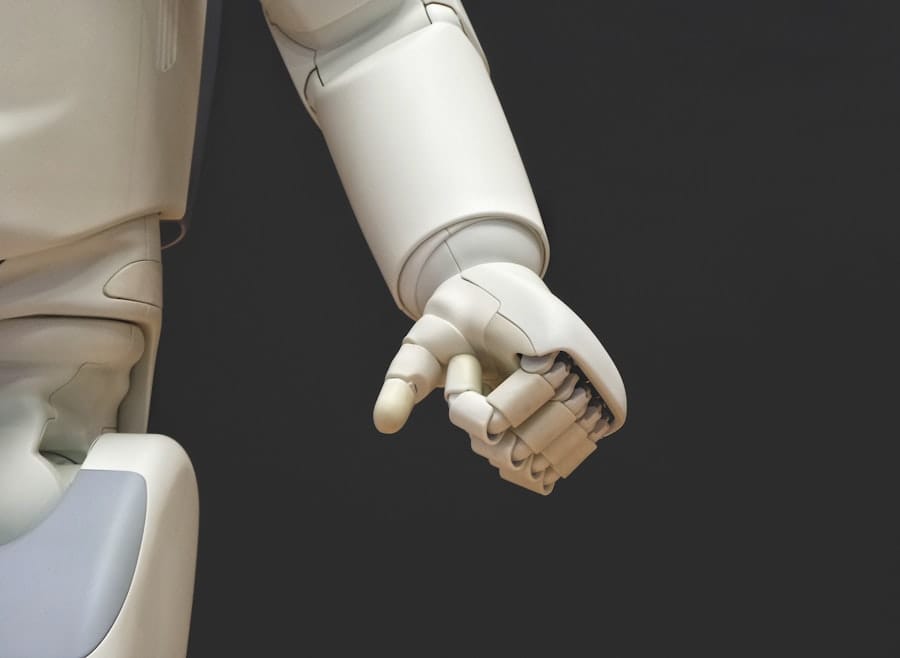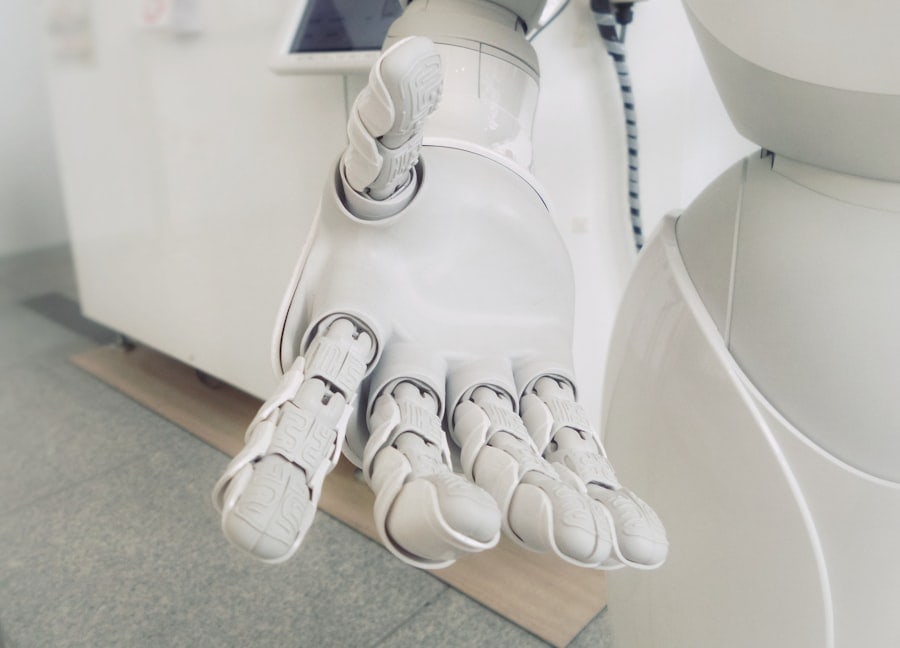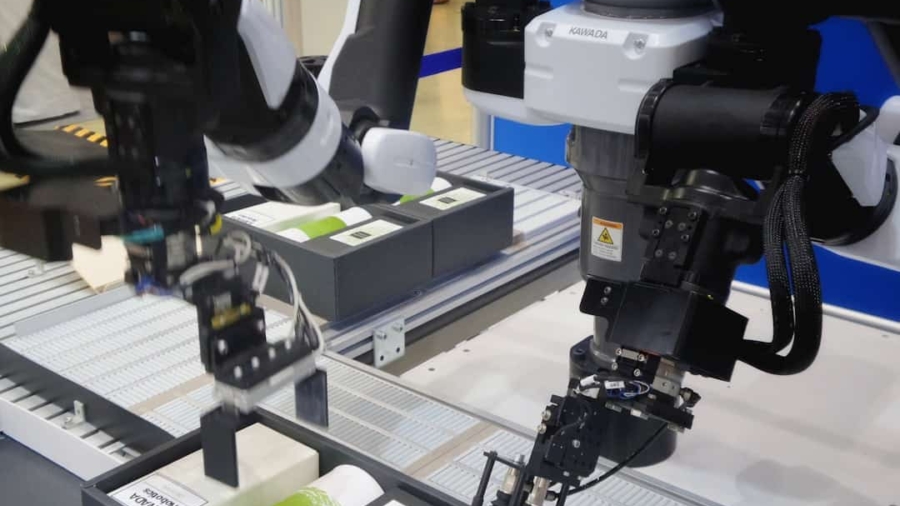The aerospace industry has long been at the forefront of technological innovation, and the integration of robotics into manufacturing processes represents one of the most significant advancements in recent years. Robotics in aerospace manufacturing encompasses a wide range of automated systems designed to enhance production efficiency, improve precision, and reduce human error. As the demand for more sophisticated aircraft and spacecraft continues to rise, manufacturers are increasingly turning to robotic solutions to meet these challenges.
The complexity of aerospace components, which often require high levels of accuracy and repeatability, makes robotics an ideal fit for this sector. The evolution of robotics in aerospace manufacturing can be traced back to the early days of automation, where simple machines were employed to assist human workers.
Modern robotics incorporates advanced technologies such as artificial intelligence, machine learning, and computer vision, enabling robots to perform intricate tasks with minimal human intervention. This shift not only streamlines production processes but also allows for greater flexibility in manufacturing operations, accommodating the rapid changes in design and production requirements that characterize the aerospace industry.
Key Takeaways
- Robotics play a crucial role in aerospace manufacturing, automating processes and improving efficiency.
- Advantages of using robotics in aerospace manufacturing include increased precision, reduced production time, and improved safety for workers.
- Types of robotics used in aerospace manufacturing include industrial robots, collaborative robots, and autonomous mobile robots.
- Robotics in aerospace manufacturing are applied in tasks such as assembly, welding, painting, and inspection.
- Challenges and limitations of robotics in aerospace manufacturing include high initial costs, complex programming, and the need for continuous maintenance and upgrades.
Advantages of Using Robotics in Aerospace Manufacturing
The advantages of employing robotics in aerospace manufacturing are manifold, significantly impacting productivity and operational efficiency. One of the primary benefits is the enhancement of precision and accuracy in manufacturing processes. Aerospace components often require tolerances measured in microns, and robotic systems can consistently achieve these specifications far better than human operators.
For instance, robotic arms equipped with advanced sensors can perform tasks such as drilling and riveting with a level of precision that minimizes material waste and reduces the likelihood of defects. Another significant advantage is the ability to operate continuously without fatigue. Unlike human workers, robots can function around the clock, leading to increased throughput and reduced production times.
This capability is particularly beneficial in an industry where time-to-market is critical. For example, during the production of commercial aircraft, the ability to maintain a steady output can help manufacturers meet delivery schedules while also allowing for rapid responses to market demands. Furthermore, the use of robotics can lead to improved safety in manufacturing environments by taking over hazardous tasks that would otherwise pose risks to human workers.
Types of Robotics Used in Aerospace Manufacturing

Aerospace manufacturing employs various types of robotics, each tailored to specific tasks within the production process. One prominent category is industrial robots, which are typically used for tasks such as welding, painting, and assembly. These robots are designed for high-speed operations and can be programmed to perform repetitive tasks with exceptional accuracy.
For instance, robotic welding systems are commonly used in fuselage assembly, where they can create strong, consistent welds that meet stringent aerospace standards. Collaborative robots, or cobots, represent another important type of robotics in this sector. Unlike traditional industrial robots that operate in isolation, cobots are designed to work alongside human operators.
This synergy allows for a more flexible manufacturing environment where robots can assist with tasks such as component handling or quality inspection without replacing human labor entirely. The integration of cobots into aerospace manufacturing processes can enhance productivity while maintaining a focus on worker safety and ergonomics.
Applications of Robotics in Aerospace Manufacturing
Robotics finds numerous applications throughout the aerospace manufacturing process, from initial design and prototyping to final assembly and quality assurance. One notable application is in additive manufacturing, commonly known as 3D printing. Robotic arms equipped with additive manufacturing capabilities can create complex geometries that would be difficult or impossible to achieve using traditional machining methods.
This technology allows for rapid prototyping and the production of lightweight components that contribute to overall fuel efficiency in aircraft. Another critical application is in surface treatment processes such as painting and coating. Robotic systems can apply coatings uniformly and efficiently, ensuring that every surface meets the required specifications for durability and performance.
For example, automated painting robots can adjust their spray patterns based on the contours of the aircraft body, resulting in a more consistent finish while minimizing overspray and material waste. Additionally, robotics plays a vital role in inspection processes, where automated vision systems can detect defects or inconsistencies that may go unnoticed by human inspectors.
Challenges and Limitations of Robotics in Aerospace Manufacturing
Despite the numerous advantages that robotics brings to aerospace manufacturing, several challenges and limitations must be addressed for widespread adoption. One significant challenge is the high initial investment required for robotic systems. The cost of purchasing, installing, and maintaining advanced robotic technologies can be prohibitive for smaller manufacturers or those operating on tight budgets.
This financial barrier may limit access to cutting-edge automation solutions and hinder competitiveness in an increasingly globalized market. Moreover, integrating robotics into existing manufacturing processes can be complex and time-consuming. Many aerospace manufacturers have legacy systems that may not be compatible with modern robotic technologies.
Transitioning to automated systems often requires significant re-engineering of workflows and retraining of personnel, which can disrupt production schedules and lead to temporary declines in output. Additionally, there is a need for ongoing maintenance and updates to ensure that robotic systems remain efficient and effective over time.
Future Trends and Innovations in Robotics for Aerospace Manufacturing

Enhancing Robotic Capabilities with AI
One emerging trend is the increased use of artificial intelligence (AI) and machine learning algorithms to enhance robotic capabilities. By leveraging AI, robots can learn from their experiences and adapt their operations based on real-time data analysis. This adaptability could lead to more efficient production processes and improved decision-making during manufacturing operations.
These robots can transport materials between different workstations or assist with inventory management without requiring constant human oversight.
Boosting Efficiency in Aerospace Manufacturing
The integration of AMRs into aerospace manufacturing could streamline logistics and reduce bottlenecks in production lines, ultimately enhancing overall efficiency.
Impact of Robotics on Efficiency and Quality in Aerospace Manufacturing
The impact of robotics on efficiency and quality within aerospace manufacturing cannot be overstated. By automating repetitive tasks, manufacturers can significantly reduce cycle times and increase output without compromising quality standards. For instance, robotic systems can perform assembly tasks at speeds unattainable by human workers while maintaining consistent quality levels across large production runs.
Moreover, the precision offered by robotic systems contributes directly to improved product quality. In an industry where safety is paramount, even minor defects can have catastrophic consequences. Robotics minimizes variability in manufacturing processes, ensuring that components meet stringent regulatory requirements and performance specifications.
This reliability not only enhances customer satisfaction but also strengthens manufacturers’ reputations within the industry.
The Future of Robotics in Advancing Aerospace Manufacturing Techniques
As the aerospace industry continues to evolve, the role of robotics will undoubtedly expand further, driving advancements in manufacturing techniques that enhance efficiency, quality, and safety. The integration of cutting-edge technologies such as AI, machine learning, and autonomous systems will enable manufacturers to respond more effectively to changing market demands while maintaining high standards of precision and reliability. In this dynamic landscape, collaboration between human workers and robotic systems will become increasingly important.
By leveraging the strengths of both humans and machines, aerospace manufacturers can create a more agile production environment capable of adapting to new challenges and opportunities. As these trends unfold, it is clear that robotics will play a pivotal role in shaping the future of aerospace manufacturing, paving the way for innovations that will redefine what is possible within this critical industry.
In a related article discussing the top trends on YouTube in 2023, it is interesting to note how advancements in aerospace manufacturing techniques, particularly through the use of robotics, are shaping the future of the industry. As highlighted in the article, the integration of robotics in aerospace manufacturing processes is revolutionizing the way aircraft components are designed, produced, and assembled. This shift towards automation not only improves efficiency and precision but also opens up new possibilities for innovation in the aerospace sector. To learn more about the latest trends in aerospace manufacturing and how they are impacting the industry, check out the article here.
FAQs
What is the role of robotics in aerospace manufacturing?
Robotics play a crucial role in aerospace manufacturing by automating various processes such as assembly, welding, painting, and inspection. This helps in improving efficiency, precision, and safety in the production of aerospace components and systems.
How do robotics advance aerospace manufacturing techniques?
Robotics advance aerospace manufacturing techniques by enabling the use of advanced materials, increasing production speed, improving quality control, and reducing production costs. They also allow for the implementation of complex and intricate designs that would be difficult to achieve manually.
What are the benefits of using robotics in aerospace manufacturing?
The benefits of using robotics in aerospace manufacturing include increased productivity, improved precision, enhanced safety for workers, reduced production time, and the ability to handle complex tasks with high repeatability. Robotics also contribute to the overall advancement of aerospace technology.
What are some examples of robotics used in aerospace manufacturing?
Examples of robotics used in aerospace manufacturing include robotic arms for assembly and welding, automated guided vehicles for material handling, robotic painting systems, and robotic inspection systems for quality control. These technologies are used in the production of aircraft, spacecraft, and related components.
How does the use of robotics impact the aerospace industry?
The use of robotics in aerospace manufacturing has a significant impact on the industry by driving innovation, improving efficiency, and enabling the production of advanced aerospace technologies. It also contributes to the competitiveness of aerospace companies in the global market.

